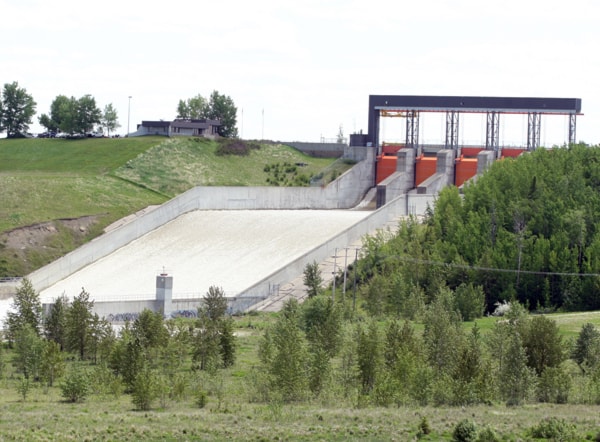Central Alberta and Little Buffalo Lubicon Lake Nation would rather be kindred spirts for something else — not Plains Western Canada oil spills.
Last week a decades-old light crude oil pipeline leaked up to 3,000 barrels into the Red Deer River.
The leak is not the first for Plains Midstream Canada, as it responded to a 28,000-barrel leak northeast of the Peace River on April 29, 2011 — one of the largest spills in Alberta’s history.
The clean-up of the Rainbow Pipeline break cost the company roughly $11 million and it lost about $165,000 a day in profits.
Residents of Little Buffalo Lubicon Lake Nation, a community about 30 km west of the spill site, are still up in arms about the spill that stretched 0.4 kms wide and 4.8 kms long.
“We heard obviously about the Red Deer River spill and it is something we are looking at really closely to see if they are dealing with your situation as they dealt with ours,” said Garrett Tomlinson, a Lubicon Lake Nation emergency co-ordinator at the time of the spill.
“The one thing that we noticed is it seems like they are talking a good game but what is happening on the ground is entirely different,” Tomlinson said.
He says Plains has secured the Rainbow Pipeline entire site in chain-linked fences and no one is allowed to see if the spill is cleaned up.
Plains Midstream Canada officials are still mum on what caused the failure, which was detected on June 7 from a 12-inch Rangeland South Pipeline system north of Sundre.
Stephen Bart, vice-president of crude oil operations for Plains Midstream Canada, said on Tuesday that they won’t know for certain what caused the leak until they remove residual oil remove a segment of pipe underneath the Red Deer River.
Waschuk Pipe Line Construction Ltd. vice-president Kevin Waschuk says the leading cause of an oil and gas pipeline failure is that of corrosion.
Waschuk Pipe Line Construction is a Red Deer-based company that specializes in pipeline construction.
Waschuk says when steel is put in the ground it is very important that it is coated with a poxy or poly-ethane coating in order to protect buried metal surfaces from corrosion.
He says 40 to 50 years ago there were different applications of coating, such as a hot-applied coal tar coating for underground gas, oil and water pipelines.
“But the idea is still the same, which is to make sure that there is no bare medal exposed,” Waschuk said.
To monitor for corrosion a company can use what is referred to as a pig. An electronic calibre pig will run through the lines and send computerized information to the company on the condition of the pipe, Waschuk said.
“So if there is corrosion in a certain area a red flag will pop up and say this area needs some attention and all the owners will do this stuff.”
Plains Midstream Canada, nor the Energy Resources Conservation Board (ERCB), has responded to questions on maintenance frequencies of the 46-year-old pipe. The company reiterates that its focus is mainly on clean-up efforts.
Then there are questions as to what the province’s quasi-judicial regulator is doing to track maintenance and the replacement of aging industry infrastructure. There is an estimated 400,000 kms of oil and gas pipelines in Alberta.
“I think this is something the ERCB definitely needs to get a little more involved in,” Tomlinson said.
Inspectors look at pipelines across the province to make sure companies are adhering to regulations, said ERCB spokesperson Cara Tobin.
“If a company fails to comply with anything, the ERCB works with the company to ensure that those non-compliance issues are immediately corrected.”
The ERCB does not have the legislative authority to issue fines but they could restrict company operations or future development plans. But each company is permitted to use their own technology to report to the ERCB, Tobin said.
“As long as we are getting the amount and quality of information that we need to determine whether they are in compliance with the regulation,” she said.
The spill has also been linked to controversy about two major oil pipeline proposals that would pump oil from Alberta to the B.C. coast and calls attention to the hazards of transporting oil across major waterways.
Plains operates over 5,000 kms of pipeline systems in Western Canada and about a fifth of the crude oil that is produced goes through their systems on a daily basis.
jjones@www.reddeeradvocate.com
